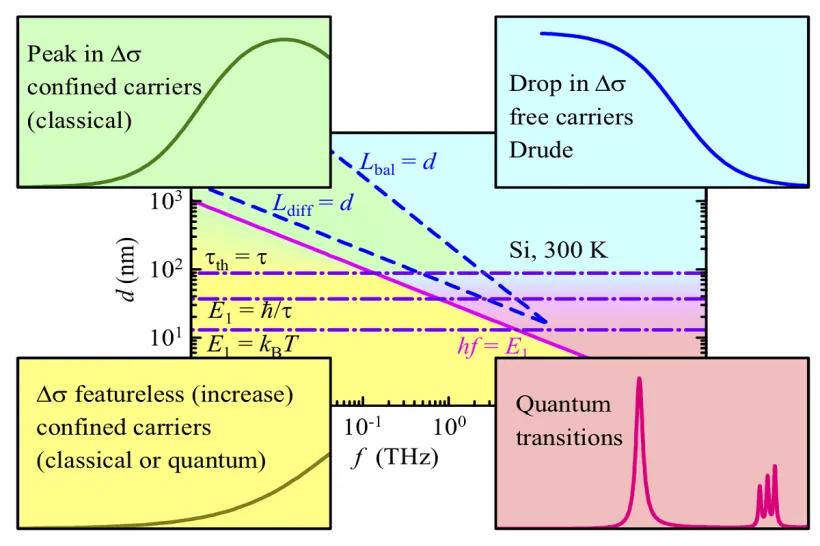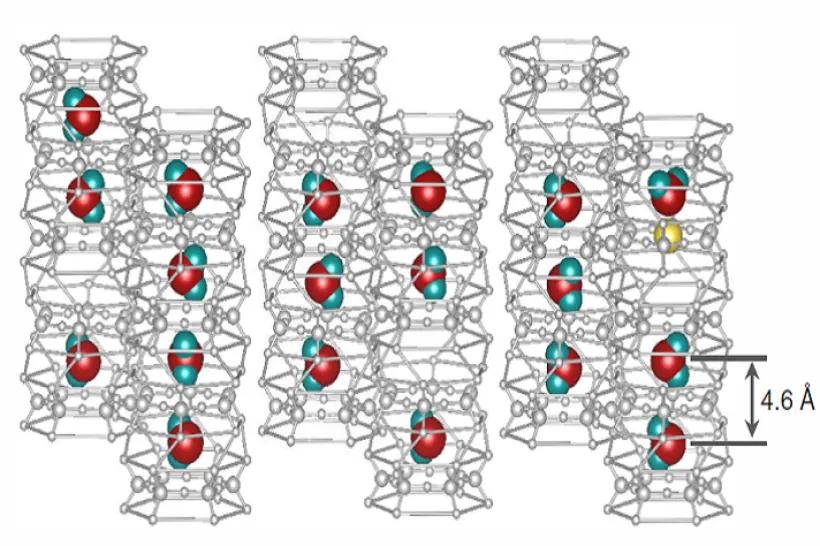We study various dynamical processes in superconductors both theoretically (J. Koláček) and experimentally (M. Šindler, R. Tesař).
Theoretical description of the superconducting state
Extended Ginzburg-Landau theory
Ginzburg-Landau theory was extended so it includes the presence of electric field. It enables to recount balance of forces and helps to understand superconductivity [1]
Vortex matter
Intensive theoretical efforts using extended Ginzburg-Landau theory and two-fluid model are made to understand various aspects of vortex matter. We carefully account for electrostatic forces and charge.
- Vortex charge - calculation of the experimentally observed electric charge of the vortex core [2]
- Vortex structure - Structure of the vortex lattice is well understood (see fig 1). The numerical program computing periodic solution of the GL equation can be downloaded here.
- Vortex dynamics - We proposed alternative theory of vortex dynamics [3,4], which explained our experiments and anomalous Hall effect [5].
- Giant thermoelectrically induced magnetic flux - is explained by the conventional matching of internal potentials when the distinction between electrochemical and electrostatic potential is properly taken into account [6].
Fig. 1. Here you can see how with changing reduced induction =B/Bc2 vortex lattice structure changes. The length unit is the vortex spacing, GL parameter κ = 1.
Modified Josephson relation
It is well known and widely accepted, that in superconductors effective electric field (for stationary state defined as gradient of the electrochemical potential) is proportional to the velocity of the vortex lattice. We proposed that the true electric field (for stationary state defined as gradient of the scalar potential) is given by so called modified Josephson relation stating that it is proportional to the relative velocity of the vortex lattice in respect to the velocity of the superconducting fluid [6].
Experimental study of thin superconducting films in THz range
Far-infrared techniques have played crucial role in experimental validation of Bardeen–Cooper–Schrieffer (BCS) theory thanks to their ability of studying physical behavior of quasiparticles and Cooper pairs, in particular in determining the optical gap 2Δ. BCS theory is universally recognized as a microscopic theory explaining various physical features of many superconducting materials, especially metals, alloys and diatomic compounds. An important limitation of BCS theory is that it generally does not describe behavior of superconductors in externally applied magnetic field, except in some special cases. Indeed, in external magnetic field superconductors of type II exhibit very complex properties due to inhomogeneity of the energy gap associated with quantization of magnetic flux and, consequently, with the existence of quantized vortices. They in turn sense an applied electric field so it is our belief that experimental efforts in far-infrared region provide a very convenient way to study vortex motion. Further, in external magnetic field quantized vortices in the interior of type II superconductors appreciably influence their high-frequency complex conductivity and these studies could play a crucial role in stimulating further advances in superconductivity theory.
Fig. 2. NbN thin layers were measured in various magneto-optical geometries (a). In Faraday orientation (b), the high-frequency response was described by Coffey-Clem model [7]. In Voigt orientation (c), optical anisotropy was induced by applied magnetic field and it was observe using beams parallel with and perpendicular to the applied field [8]
Our group main focus are THz measurements in applied magnetic field in laboratoři FIRM and Laboratory of terahertz spectroscopy. We have studied thin NbN superconducting films in all fundamental magneto-optical configurations (fig 2A). In the Faraday geometry, optical properties are insensitive to the direction of the incident beam polarisation and our results can be described by Coffey-Clem model (fig 2B). In the Voigt geometry, we observed large difference for beam linearly polarised parallel with and perpendicular to the applied magnetic field direction (fig 2C). In Faraday geometry, we are struggling to measure difference for left-handed and right-handed circularly polarised beams in high temperature superconductor layer (YBaCuO). It is unclear based on our current theoretical understanding if the effect is negligibly small or not. Currently, we are also working on better understanding of processes in thin superconducting NbN films driven out of equilibrium state by short optical pulse.
List of topics
- High-frequency complex conductivity
- High-frequency complex conductivity in applied magnetic field
- Optical Pump Terahertz Probe (OPTP) experiments
- Far-infrared magnetoconductivity tensor of high temperature superconductors
- Superconductor-insulator transition
References
- Bernoulli Potential in Superconductors. How the Electrostatic Field Helps to Understand Superconductivity, P. Lipavský, J. Koláček, K. Morawetz, E. H. Brandt, T.-J. Yang, Lecture Notes in Physics, Springer (2008), ISBN 978-3-540-73455-0.
- Charge profile in vortices , J.Koláček, P.Lipavský, E.H.Brandt, Phys.Rev.Lett. 86, 312-315 (2001).
- Temperature dependence of the far infrared transmission of GdBaCuO thin film, R.Tesař, Z.Šimša, J.Koláček, F.F.Hanna, P.Gornert, W.Michalke, JMMM 140-144,1329 (1995)
- High frequency vortex dynamics and magnetoconductivity of high temperature superconductors, J.Koláček, E.Kawate Physics Letters A 260, 300 (1999)
- Hall voltage sign reversal in type II superconductors, J.Koláček, P.Vašek, Physica C 336, 1999 (2000)
- Thermopower in superconductors: Temperature dependence of magnetic flux in abimetallic loop, J. Koláček, P. Lipavský, Phys. Rev. B 71, 092503 (2005).
- Far-infrared electrodynamics of thin superconducting NbN film in magnetic fields, M. Šindler, R. Tesař, J. Koláček, P. Szabó, P. Samuely, V. Hašková, C. Kadlec, F. Kadlec, P. Kužel, Superdcond. Sci. Technol. 27, 055009 (2014).
- Anisotropic behaviour of transmission through thin superconducting NbN film in parallel magnetic field, M. Šindlera, R. Tesař, J. Koláček, L. Skrbek, submitted to Physica C






